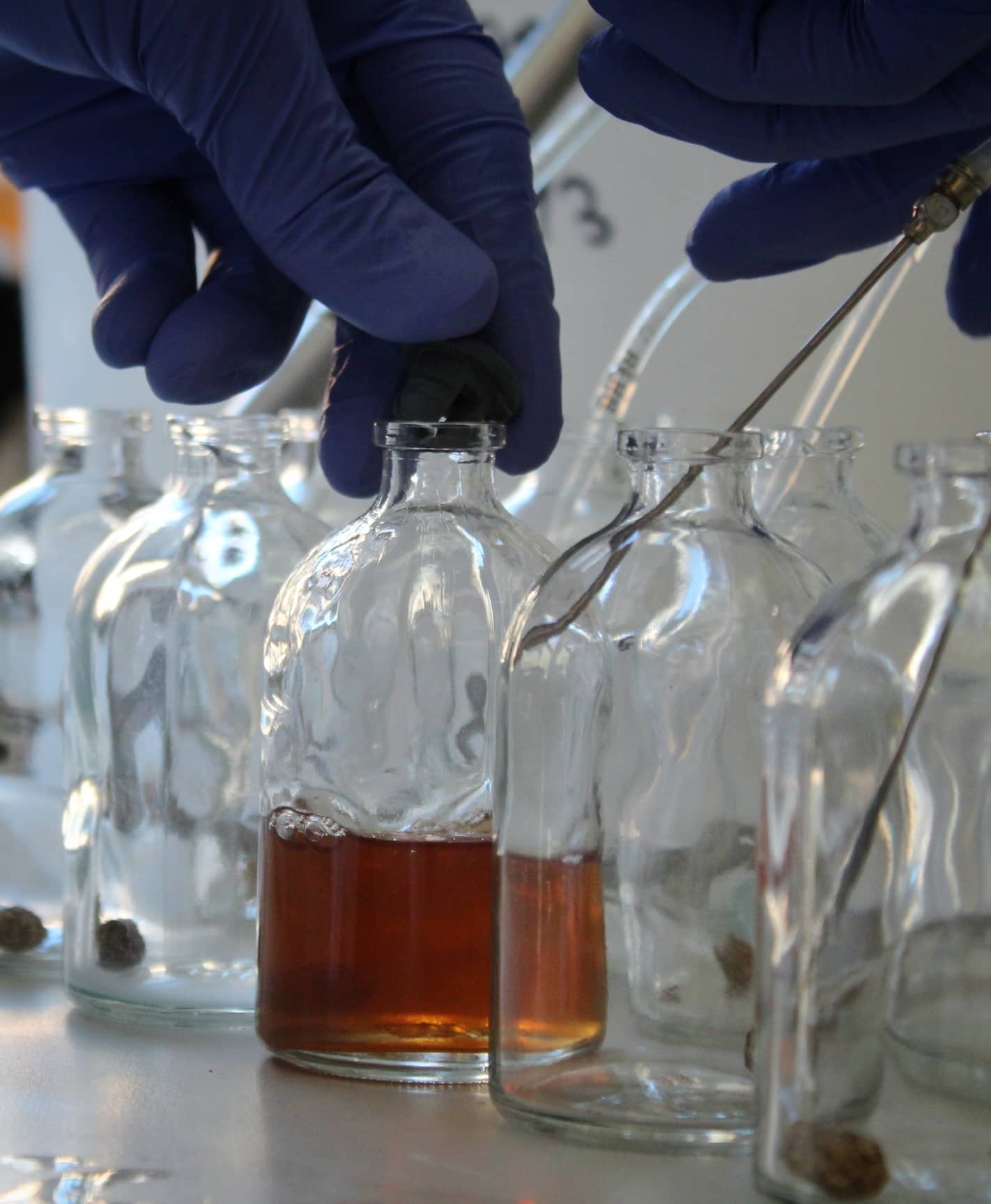Defined medium for Neocallimastigomycota
Sophia Strobl, Julia Vinzelj, Nico Peer, Diana Young, Akshay Joshi, Rolf Warthmann, Veronika Flad, Urs Baier, Michael Lebuhn, Hans-Joachim Nägele, Sabine M. Podmirseg
Disclaimer
DISCLAIMER – FOR INFORMATIONAL PURPOSES ONLY; USE AT YOUR OWN RISK
The protocol content here is for informational purposes only and does not constitute legal, medical, clinical, or safety advice, or otherwise; content added to protocols.io is not peer reviewed and may not have undergone a formal approval of any kind. Information presented in this protocol should not substitute for independent professional judgment, advice, diagnosis, or treatment. Any action you take or refrain from taking using or relying upon the information presented here is strictly at your own risk. You agree that neither the Company nor any of the authors, contributors, administrators, or anyone else associated with protocols.io, can be held responsible for your use of the information contained in or linked to this protocol or any of our Sites/Apps and Services.
Abstract
This is the protocol for the completely defined medium base for Neocallimastigomycota (anaerobic gut fungi, AGF) that was used within the HiPoAF and FUNGAS projects.
If you add 2 g/L xylan and 3 g/L cellobiose as C-sources to this medium, Neocallimastigomycota - in our experience - can grow on it for prolonged periods (more than 18 months and running, with weekly sub-cultivation). We use this medium, however, more for short-term experiments rather than long-term culture maintenance. So far, we have tested this medium on strains of Anaeromyces mucronatus , Caecomyces communis , Neocallimastix cameroonii , Neocallimastix frontalis , Pecoramyces ruminantium and all were able to grow. However, depending on the C-source added, they might show unusual clustering behaviour (e.g., clinging onto the glass).
This completely defined medium remains nearly colourless if no C-source is added before autoclaving the bottles, which is especially convenient for microscopy. For this purpose, a soluble C-source can be added directly to the bottles after autoclaving.
Before start
Before you start, make sure you have prepared all necessary stock solutions, and have all chemicals needed at hand (see Materials section for details).
You will need approx. 2h 0m 0s in total to prepare the medium (depending on the volume you prepare, it can take longer or might be faster).
Steps
Add salt solution I, salt solution II, hemin solution, resazurin solution, and MilliQ water to a cooking pot.
If you want to use xylan as a C-source (or other C-sources that don't dissolve well in water), you should add it here as well.
Heat the mixture and simmer until everything is dissolved and the colour starts to change to yellow. For us with 2 L of medium in a 5 L cooking pot, this takes about 0h 20m 0s.
While the mixture is heating up, flush a large enough Erlmeyer flask with pure CO2for 0h 2m 0s.
Carefully pour the mixture from the pot into the Erlmeyer flask. Cool it with ice-water while agitating it by magnetic stirrer and bubble it with pure CO2. This takes about 0h 10m 0s to 0h 20m 0s
Once the mixture has cooled to around 39 °C, add the trace elements solution, NaHCO3, soluble C-source (like cellobiose, glucose, etc.; if necessary) and lastly the L-cysteine-HCl. Bubble with CO2 for another 0h 10m 0s.
Set the pH of the medium to 6.9with the help of NaHCO3 powder or 5M NaOH solution. The medium should now be a translucent yellowish colour.
While setting the pH, flush your serum bottles with pure CO2 for 1-2 minutes, to minimize oxygen contamination when aliquoting your medium in step 6.
Aliquot the medium into your serum bottles under continuous flow of CO2 in the serum bottles and the Erlmeyer flask filled with medium. Depending on the amount of medium prepared this step takes around 0h 30m 0s.

Take the gas hose out of the serum bottle and immediately close it with a rubber stopper, then crimp the bottle with an aluminium cap. The medium can turn slightly pink at first upon transfer, but this usually settles quickly. If the medium turns bright pink upon transfer, however, keep bubbling it with CO2 within the serum bottles for up to 0h 5m 0s before closing it up.

Autoclave the serum bottles at 121°Cfor 0h 20m 0s .
Store the bottles without regard to temperature for up to 2 months. 4°C works as well as 37°C for the duration of 2 months at least. Discard any bottles with medium that turned pink or red.
Before use, the bottles should be warmed to 39°C. Also, 0.01mL vitamin solution must be added per mL of medium shortly before use by injection. If needed, a sterilized solution of soluble C-source (e.g. glucose, cellobiose), and antibiotic stock solution can be injected as well.

<img src="https://static.yanyin.tech/literature_test/protocol_io_true/protocols.io.bp2l6x551lqe/jngrbqn5f4.jpg" alt="Colours of the completely defined medium. From left to right: medium turned pink (should not be used; indicates oxygen contamination); sterile medium with no C-source added (we call it "Brunhilde" in our lab, because we are incredibly funny and working with us in the lab is a blast); sterile medium with vitamin solution and glucose solution added after autoclaving; sterile medium with xylan and cellobiose added before autoclaving (known to us as "Agathe"); sterile medium with only wheat straw as C-source (our "Berthelm"). Picture copyright: Julia Vinzelj " loading="lazy" title="Colours of the completely defined medium. From left to right: medium turned pink (should not be used; indicates oxygen contamination); sterile medium with no C-source added (we call it "Brunhilde" in our lab, because we are incredibly funny and working with us in the lab is a blast); sterile medium with vitamin solution and glucose solution added after autoclaving; sterile medium with xylan and cellobiose added before autoclaving (known to us as "Agathe"); sterile medium with only wheat straw as C-source (our "Berthelm"). Picture copyright: Julia Vinzelj "/>

